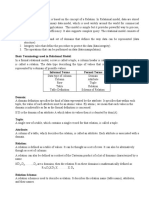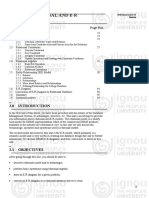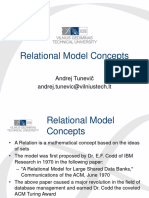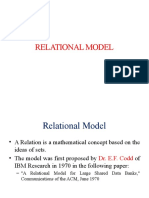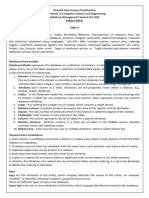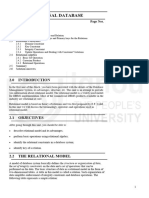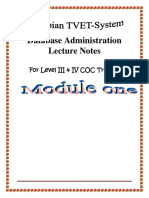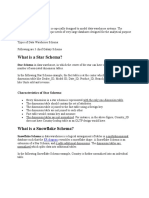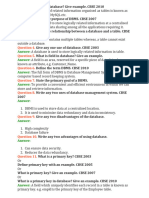0% found this document useful (0 votes)
14 views32 pagesCourse RM
The document outlines the stages of database design, including analysis, conceptual modeling, logical modeling, and implementation. It explains the relational model, emphasizing concepts such as attributes, domains, tuples, relations, keys, and foreign keys. Additionally, it provides examples to illustrate these concepts and their application in database schemas.
Uploaded by
ibnbiskraCopyright
© © All Rights Reserved
We take content rights seriously. If you suspect this is your content, claim it here.
Available Formats
Download as PDF, TXT or read online on Scribd
0% found this document useful (0 votes)
14 views32 pagesCourse RM
The document outlines the stages of database design, including analysis, conceptual modeling, logical modeling, and implementation. It explains the relational model, emphasizing concepts such as attributes, domains, tuples, relations, keys, and foreign keys. Additionally, it provides examples to illustrate these concepts and their application in database schemas.
Uploaded by
ibnbiskraCopyright
© © All Rights Reserved
We take content rights seriously. If you suspect this is your content, claim it here.
Available Formats
Download as PDF, TXT or read online on Scribd
/ 32











